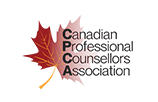Both work and wellness play a major role in people’s lives, and the two are highly interconnected. An individual’s wellness impacts their performance and satisfaction at work while a healthy work life can in turn impact wellness.
Employees and employers are aware of this. A 2012 study by Sun Life Financial revealed that 80% of Canadian employees believe employers play a role in helping facilitate their overall wellbeing while 92% of Canadian employers recognize that employee wellness affects corporate performance (Pirisi, 2015). Going deeper, many have argued that wellness can profoundly affect a company’s turnover rates, recruitment efforts, and overall productivity (Stovall, 2017).
It therefore pays off for companies to invest in developing and implementing high-quality wellness programs. In fact, according to that survey, wellness programs save roughly 1.5-1.7 days in employee absenteeism per person over a one year period (Pirisi, 2015). Furthermore, organizations such as Canada Life and Dupont have reported returns ranging from $2-$6.85 in savings per $1 invested in the wellness of their employees (Maksrides, 2013).
Developing a good wellness program takes strategic planning. The process requires a certain expertise that companies may sometimes not have in house. This is where professionals with training in wellness counselling come in. Keep reading to discover how you may contribute to this important process with your Diploma in Wellness Counselling.
Ascertain Needs by Involving Employees in the Initiative
Many professionals believe that “the best designed corporate wellness benefits and programs focus on the actual needs of employees.” (Taylor, 2017). Addressing existing needs will ensure higher engagement, which is important because the participation of at least least 60% of employees is required for companies to gain a return on their investment (Maksrides, 2013).
Needs vary from workplace to workplace, and a good way to determine what to include in a company’s wellness program is to involve its employees throughout the development process. Evaluating employee needs and preferences is therefore one of the first steps.
As you progress with developing the program, you may develop a committee, to ensure your program is molded to the custom needs of the organization. This type of involvement will also build ownership of the program among employees, which will drive engagement.

Determine employee wellness needs by involving them in the program development process
Harness Your Knowledge of Motivation Once You Become a Wellness Counsellor
Employee engagement in a wellness program also depends heavily on motivation and incentives. A common mistake employers make in this area is incentivizing targets using a carrot and stick approach (Pirisi, 2015). According to many experts, such incentives do not generate the intrinsic motivation necessary to ensure long-term engagement in corporate wellness programs (Aldana, 2018).
Instead, many wellness experts suggest beginning with small external rewards based on participation, and then encouraging employees to develop their own intrinsic motivation based on the personal benefits gained from engaging in wellness activities (Aldana, 2018). These are behavioral changes that will take time and a supportive environment to flourish, but they will result in long-term benefits for both employees and employers.
Develop Quality Communication Methods to Ensure Engagement
Professionals with a diploma in wellness counselling know that once a corporate wellness program has been developed, it’s necessary to communicate its components to the entire company. Insurance companies emphasize that communication is extremely important.(Cowan Insurance Group, n.d.). Other experts further advocate that this communication needs to be frequent, consistent, management-driven, and comprehensive (Stovall, 2017) (Maksrides, 2013).
Whether it’s a printed wellness newsletter or alerts via email, setting up a communication system in relation to a corporate wellness program is crucial to its success.

Develop a quality communication strategy to help the program succeed
Are you interested in wellness coach training?
Contact Rhodes Wellness College to inquire about our wellness counselling diploma program!
Sources
Aldana, S. (2018). Wellness Program Engagement: The Complete Guide. Retrieved March 27, 2018, from https://www.wellsteps.com/blog/2018/01/01/wellness-program-engagement-the-complete-guide/.
Cowan Insurance Group (n.d.). What Goes Into an Effective Wellness Program. Retrieved March 27, 2018, from https://www.cowangroup.ca/site/pdf/EffectiveWellnessPrograms.pdf.
Maksrides, L. (2013). How will is your wellness program? Retrieved March 27, 2018, from http://www.benefitscanada.com/benefits/health-wellness/how-well-is-your-wellness-program-37003.
Pirisi, A. (2015). Workplace Wellness Programs: Designing a Healthy Proposition for Employees. Retrieved March 27, 2018, from http://www.obesitynetwork.ca/workplace-wellness-programs-designing-a-healthy-proposition-for-employees-9-25-2015.
Stovall, L. (2017). How to Build a Successful Workplace Wellness Program. Retrieved March 26, 2018, from https://www.thebalance.com/how-to-build-a-successful-workplace-wellness-program-1917966.
Taylor, T. (2017). 8 Steps to a Corporate Employee Wellness Program. Retrieved March 27, 2018, from https://www.thebalance.com/corporate-employee-wellness-program-1177989.










